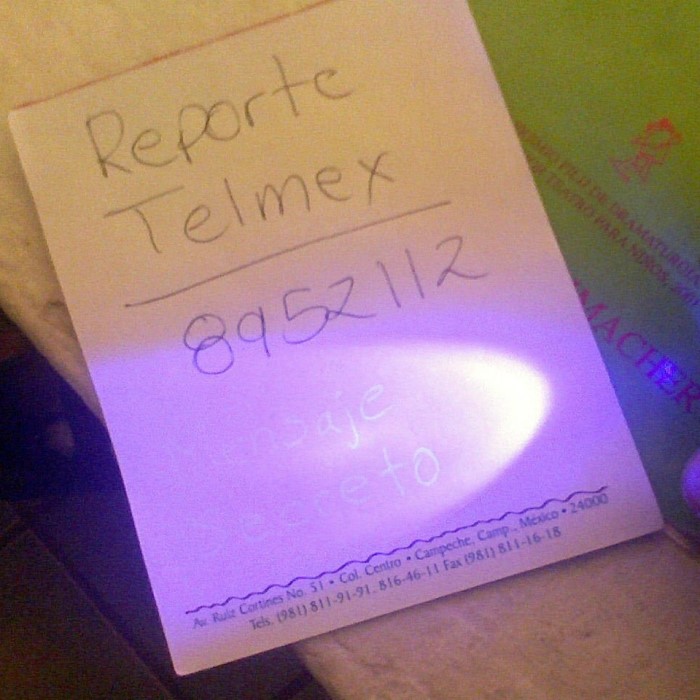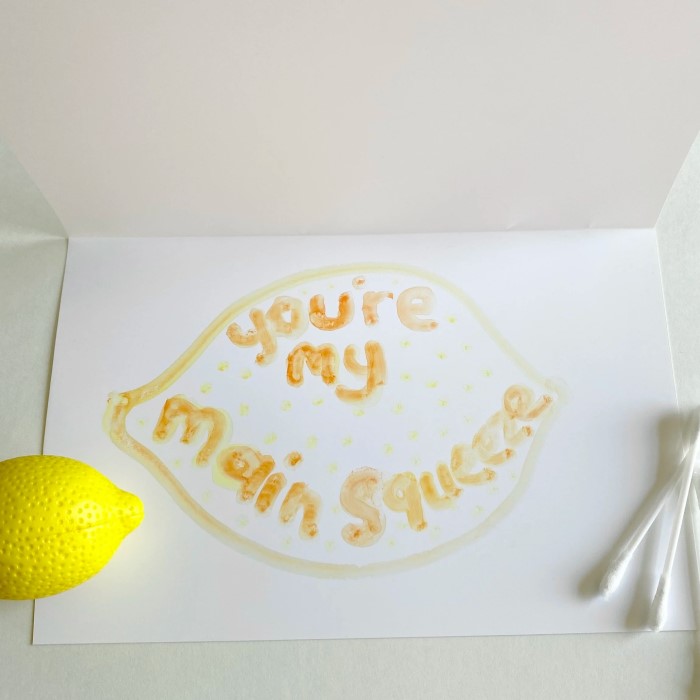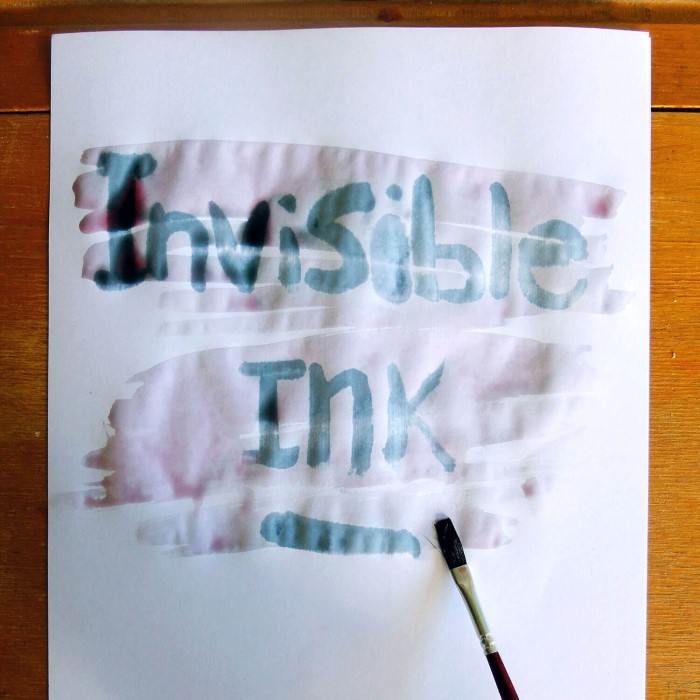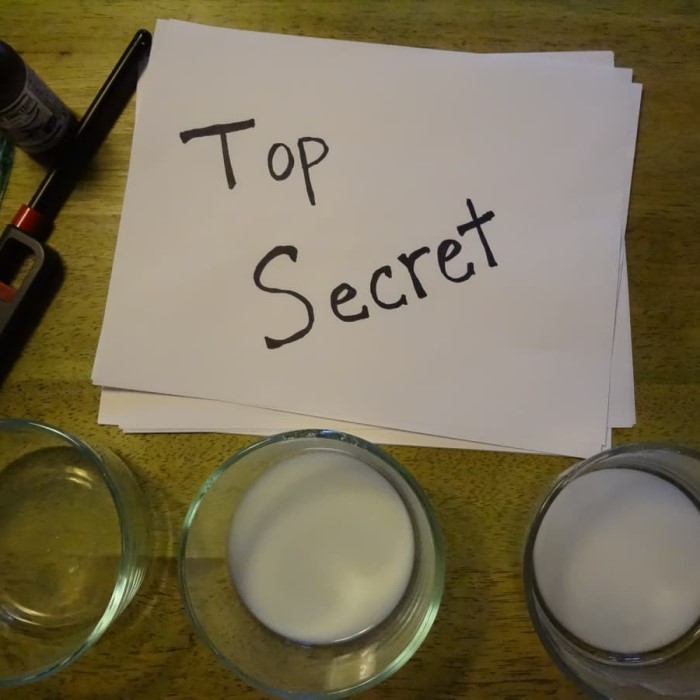Introduction
Invisible ink has long captured the imagination of people, especially children. The thrill of creating messages that can only be seen under specific conditions makes invisible ink not just a fun activity but also an exciting introduction to scientific concepts. In this article, we will explore various methods on how to make invisible ink using commonly available household items. This hands-on approach not only provides entertainment but also promotes learning, curiosity, and creativity. Let’s uncover the fascinating world of invisible ink together!

What is Invisible Ink?
Invisible ink refers to substances that create marks or images that are not visible to the naked eye but can be revealed through specific techniques. Historically, invisible ink has served various purposes, such as secret communications, espionage, and even creative storytelling. The most intriguing characteristic of invisible ink is its ability to disappear and reappear, engaging anyone who encounters it.
Invisible ink can be made from different materials, including acids, organic solutions, or even colorless substances that require heat, light, or other chemical reactions to reveal their hidden messages. Understanding these properties allows children to grasp fundamental scientific principles, encouraging them to think critically about what they observe.
Why Make Invisible Ink?
Making invisible ink serves multiple purposes that delight both children and adults. Here are some reasons why this activity is worth trying:
1. Educational Value
Engaging in the process of making invisible ink provides a fantastic opportunity for children to learn about chemical reactions and properties of various substances. It introduces concepts such as acidity, oxidation, and temperature effects. As they experiment, children gain hands-on experience that reinforces classroom learning in an enjoyable manner.
2. Sparks Creativity
Kids love to write secret notes to friends or relatives. By making their invisible ink, they can unleash their creativity by crafting unique messages and codes. This sense of ownership over their creations fosters self-expression and imaginative thinking.
3. Encourages Problem-Solving
When children experiment with various substances and methods to create and reveal invisible ink, they face challenges that require critical thinking and problem-solving. They learn to hypothesize, test their theories, and draw conclusions based on the results, which enriches their overall learning experience.
4. Fun and Engagement
The joy of surprising friends with secret messages written in invisible ink adds an element of fun and excitement to the activity. It transforms learning into a playful adventure, making it a perfect option for parties, science fairs, or family gatherings.
How to Make Invisible Ink with Lemon Juice
Lemon juice is one of the most popular materials. The acidity of lemon juice allows the writing to become visible when heated. Here’s a step-by-step guide on how to make invisible ink using lemon juice.
Materials Needed
- Fresh lemon juice
- Cotton swabs or a small paintbrush
- White paper or cardstock
- A heat source (lamp, iron, or even a toaster)
- A bowl for mixing (if needed)
Step 1: Writing the Message
- Extract Lemon Juice: If you have a fresh lemon, cut it in half and squeeze out the juice into a bowl. If you have pre-packaged lemon juice, that’s fine too!
- Dip the Tool: Take a cotton swab or a small paintbrush, dip it into the lemon juice, and shake off any excess liquid.
- Write on Paper: Use the cotton swab to write your secret message on a piece of white paper. Since the lemon juice will dry clear, you won’t be able to see what you wrote at this stage.
Step 2: Drying the Message
Once you’ve finished writing, allow the paper to dry completely. This may take about 10–15 minutes. Ensure it dries in a flat position, free from folds or creases. Make sure to avoid any disruption that could disturb the juice before it dries.
Step 3: Revealing the Message
- Prepare the Heat Source: After the paper has dried, choose a gentle heat source. A lamp works well, but you can also use a moderate setting on an iron. If using an iron, place a towel over the paper for protection.
- Heat the Paper: Hold the paper close to the heat source, but be careful not to burn it. The areas where the lemon juice was applied will start to turn brown and become visible.
- Admire Your Hidden Work: Once the message is revealed, you can now see your secret writing clearly! This creates a fun moment of surprise and delight.
Other Methods
While lemon juice is a classic choice, there are many other liquids you can use to create ink. Each method possesses unique features and introduces different scientific principles. Let’s explore a few more creative and fun methods.
Milk
Using milk is another effective way to make invisible ink, and it yields similar results to lemon juice. Here’s how:
Materials Needed
- Milk
- Cotton swab or paintbrush
- White paper
- Heat source (lamp, iron, or hairdryer)
Step-by-Step Process
- Write with Milk: Dip your cotton swab into the milk and write your message on the white paper, just as you did with lemon juice.
- Allow to Dry: Let the milk dry completely. The message will remain invisible until you use heat.
- Reveal the Message: Hold the paper near a gentle heat source. As the proteins in the milk heat up, they will caramelize and turn brown, revealing the hidden message.
Baking Soda
Baking soda is a common household item that can also be transformed into ink. It’s slightly different from the previous methods, as it requires a special revealing agent to make it visible.
Materials Needed
- Baking soda
- Water
- Cotton swab
- White paper
- Grape juice (or any acidic juice)
Step-by-Step Process
- Mix Solution: In a bowl, mix equal parts of water and baking soda. This will create your invisible ink solution.
- Write the Secret Message: Use a cotton swab to write your message on a piece of white paper with the baking soda mixture. It will be invisible once it dries.
- Dry the Message: Allow the paper to dry completely.
- Reveal the Message: To reveal the hidden writing, dip another cotton swab into grape juice and paint over the message. The acidic content in the grape juice reacts with the baking soda, causing the text to appear in a different color.
Alternative Methods
In addition to these popular methods, you can experiment with other materials that may create invisible ink, including:
- Vinegar: Similar to lemon juice, vinegar can be used in the same way. Following the same steps, it can be revealed through heat.
- Invisible Ink Pens: Some pens offer ink that is typically revealed under UV light. These are often used in entertainment and security settings.
Practical Applications
While creating invisible ink is primarily a fun experiment, it has several practical applications that can enhance educational engagements. Here are a few ways you can incorporate invisible ink into learning or activity sessions:
1. Secret Message Games
Engaging children in secret message games can stimulate their imagination. Set up a scavenger hunt where clues are written in ink, leading them to discover hidden surprises.
2. Historical Context
Discuss the historical significance of ink. Explore its use during wars or espionage, providing context and relativity to modern science. This can enhance their understanding of history, science integration, and critical thinking.
3. Science Experiments
Incorporate invisible ink as part of a science-themed party or school project. It encourages teamwork when kids collaborate to create their messages and reveal them using different methods.
4. Creative Storytelling
Encourage children to craft stories involving secret agents or hidden messages. This can enhance their literacy skills and creativity while allowing them to practice writing in a unique way.
FAQs
What Liquid Makes the Best Invisible Ink?
The best liquid for invisible ink varies, depending on your intention and desired outcome. Common liquids include lemon juice, milk, baking soda, and vinegar. Each reacts differently to heat and acid, offering various ways to reveal hidden messages.
How Do You Make Invisible Ink with Lemon Juice?
To utilize lemon juice as ink, write a message on paper with a cotton swab dipped in lemon juice. Allow it to dry and then apply heat, such as from an iron, to reveal the message as it oxidizes.
How Was Invisible Ink Made?
Historically, invisible ink was made using natural substances like lemon juice, vinegar, or even urine. During wars, various agents created specialized inks designed for secrecy. The core principle remains the same: utilizing materials that become visible through specific methods.
Conclusion
Exploring how to make invisible ink is not just a fun activity; it is an educational journey that can capture the interest of children and adults alike. By using simple materials such as lemon juice, milk, and baking soda, you can create exciting hidden messages that spark curiosity and foster scientific understanding.
Children benefit from learning about the scientific principles behind the reactions that produce invisible ink while enjoying the thrill of seeing their secret messages revealed. By experimenting with various substances, they develop critical thinking and problem-solving skills, which are invaluable throughout life.
So, gather your supplies, unleash your creativity, and embark on this delightful adventure into the world of invisible ink! You’re sure to create many fun memories along the way.



